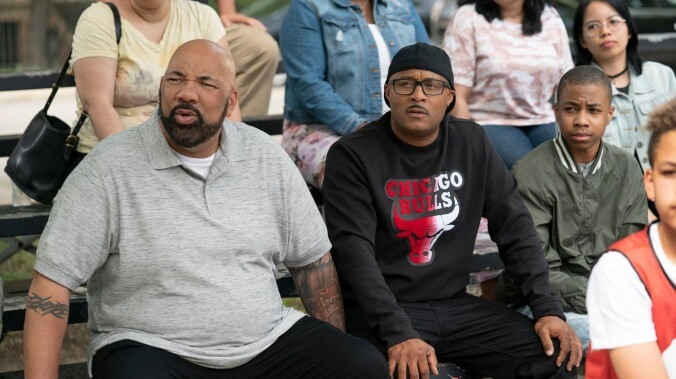South Side proves you can make a great Chicago show that’s also a smart blue-collar comedy
The second season of Bashir Salahuddin and Diallo Riddle’s sitcom debuts on HBO Max with even more love for the Second City

From quirky comedies like Easy and Man Seeking Woman, to gritty dramas like The Chi and Lovecraft Country, Chicago is the city that works… well as a backdrop. But the thing about so many of those series, and even the Dick Wolf-created Chicago shows, is that they could be set anywhere. Rom-com situations can and do happen anywhere. Corruption and racism exist everywhere.
There are so few shows set in Chicago where the city feels like a character, where the writing lands both because and in spite of its specificity. HBO Max’s South Side is the rare show that meets that criteria (“Chi-teria?”).
The first season of the sitcom, created by Diallo Riddle, Bashir Salahuddin, and Sultan Salahuddin, made its home on Comedy Central, but has moved to the premium streamer for its second go-round. And that new location comes with changes to the overall flow of the show. While the series still focuses on the adventures of Simon and Kareme (played by Sultan Salahuddin and Kareme Young, respectively), two employees of a rent-to-own furniture business, we get to see more of their side hustles in action.
The recent community college grads are street entrepreneurs, and their co-workers have plenty going on while they’re supposed to be working as well. We also get to see more of Officers Turner and Goodnight (real-life married couple Chandra Russell and Bashir Salahuddin) and their on-the-job hobbies. Well, more so Officer Turner’s; Goodnight is almost never involved on purpose.
South Side is filmed in Chicago’s Englewood neighborhood, a part of town that is often used as a dog whistle by people whose idea of Chicago is fully formed by negative attention from bad faith actors in the national mediasphere. Here, Englewood isn’t used as a prop to represent violence. Its portrayal is as realistic as has ever been depicted on television, and even its less-savory aspects are shown through a lens of comedy.
The Salahuddins and most of the cast are actually from the South and West Sides of Chicago, and it’s evident in everything from their choices in exterior locations to the hyper-local references. There’s a moment in episode one, where a woman is being called stuck-up and is asked if it’s because she went to Kenwood or Whitney Young High School. So many confident Chicago women have been asked this question countless times.
The creators’ and writers’ love for Chicago, especially Black Chicago, is made clear in season two. South Side does not treat Blackness as a monolith, nor does it use it as a punchline. This is not a minstrel show made to entertain white audiences with performative Blackness. This is the slice-of-life, blue-collar comedy Chicago Party Aunt only wishes it could be.
South Side’s guest appearances are also very Chicago—it’s clear that the city’s famous and soon-to-be famous folks were paying attention to season one and were eager to join what looks to be a fun day on set. Comedians, rappers, and local actors have always made cameos, but someone finally got Chance on the phone, and that’s as 2021 Chicago as you can get.
Part of the charm of South Side also lies in other ensemble comedies like Cheers and NewsRadio: They’re all workplace-driven, but at their cores are about the different, often super-weird personalities that come together when everyone is forced to assemble for eight hours a day. South Side takes characters that would most likely be painted with a broad brush by a non-Chicago, non-Black writing staff and gives them nuance. Not every Black girl from around the way is the same, and we get to see that. Not every Black police officer is the same, and we get to see that. Hell, the lifestyles of the characters played by Kareme and Quincy Odom prove that not even every identical twin is the same. (Labor versus management can tear a family apart!)
South Side builds upon the rich personalities of the residents of Englewood we were introduced to in the first season, and finds even more to dig into in the second. While the jokes are truly so Chicago, they are also so relatable in their context. The series is a love letter to a city and the parts of it that outsiders have made the rest of the world look down upon. It’s one part middle finger to those people, and two parts really, really funny.